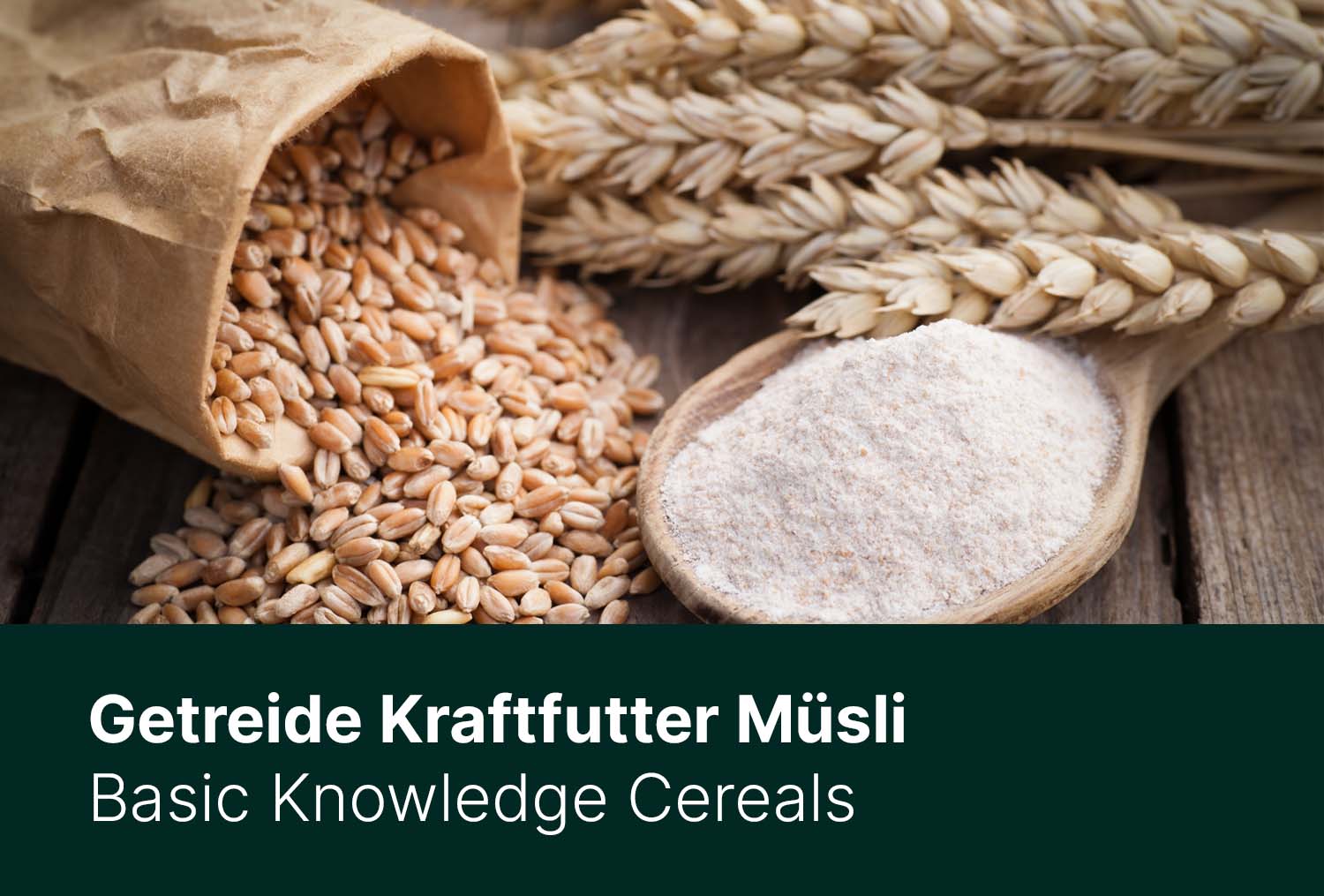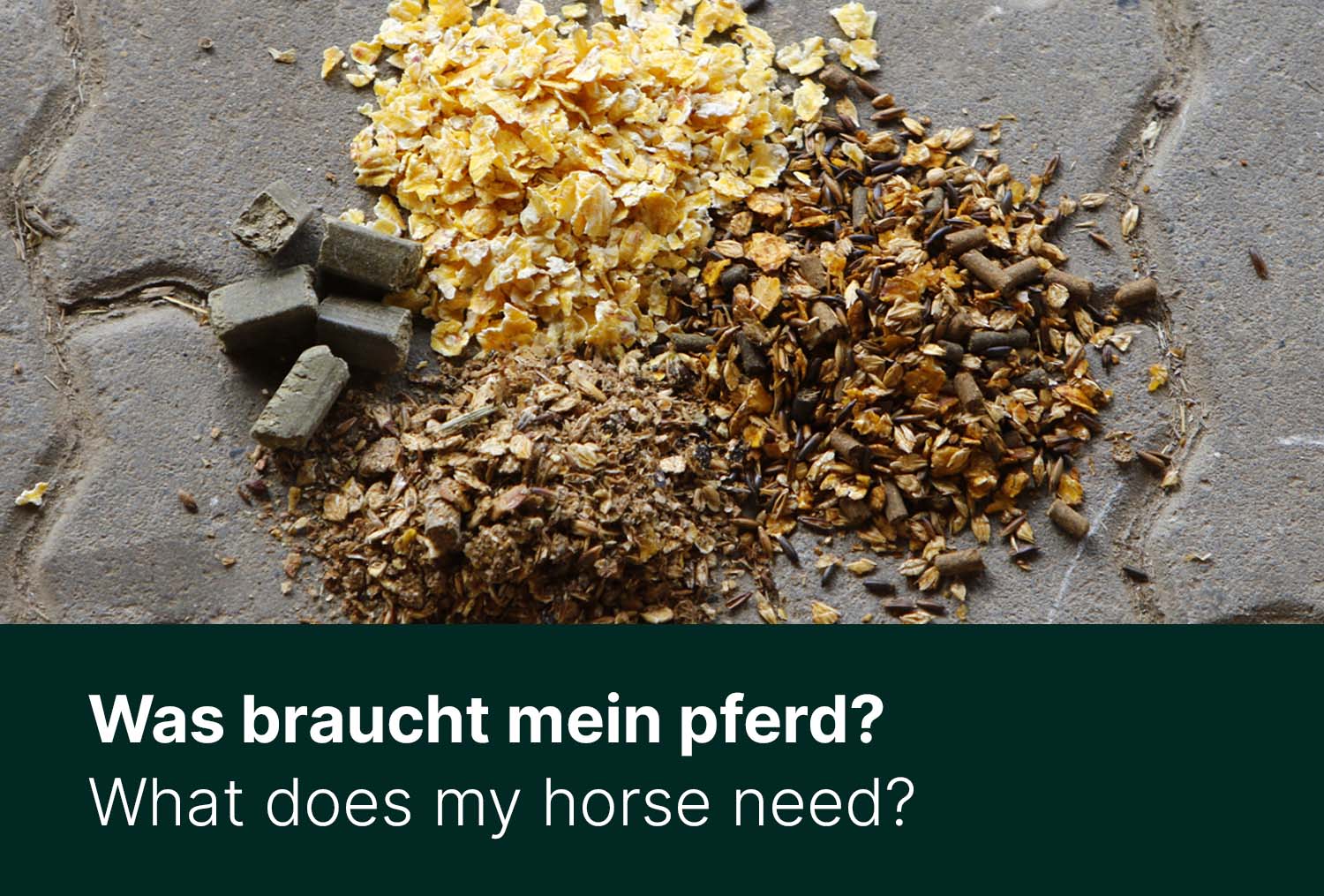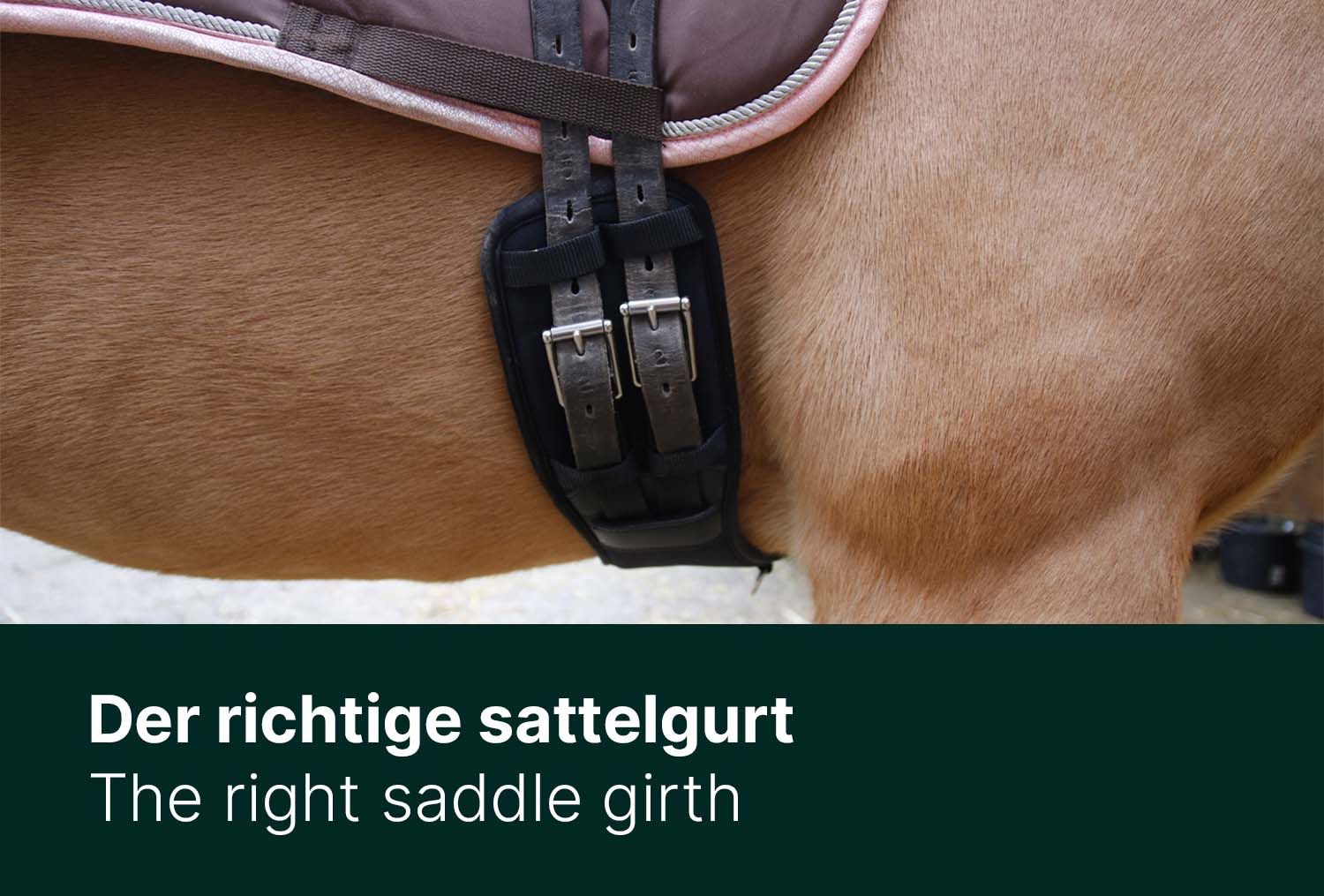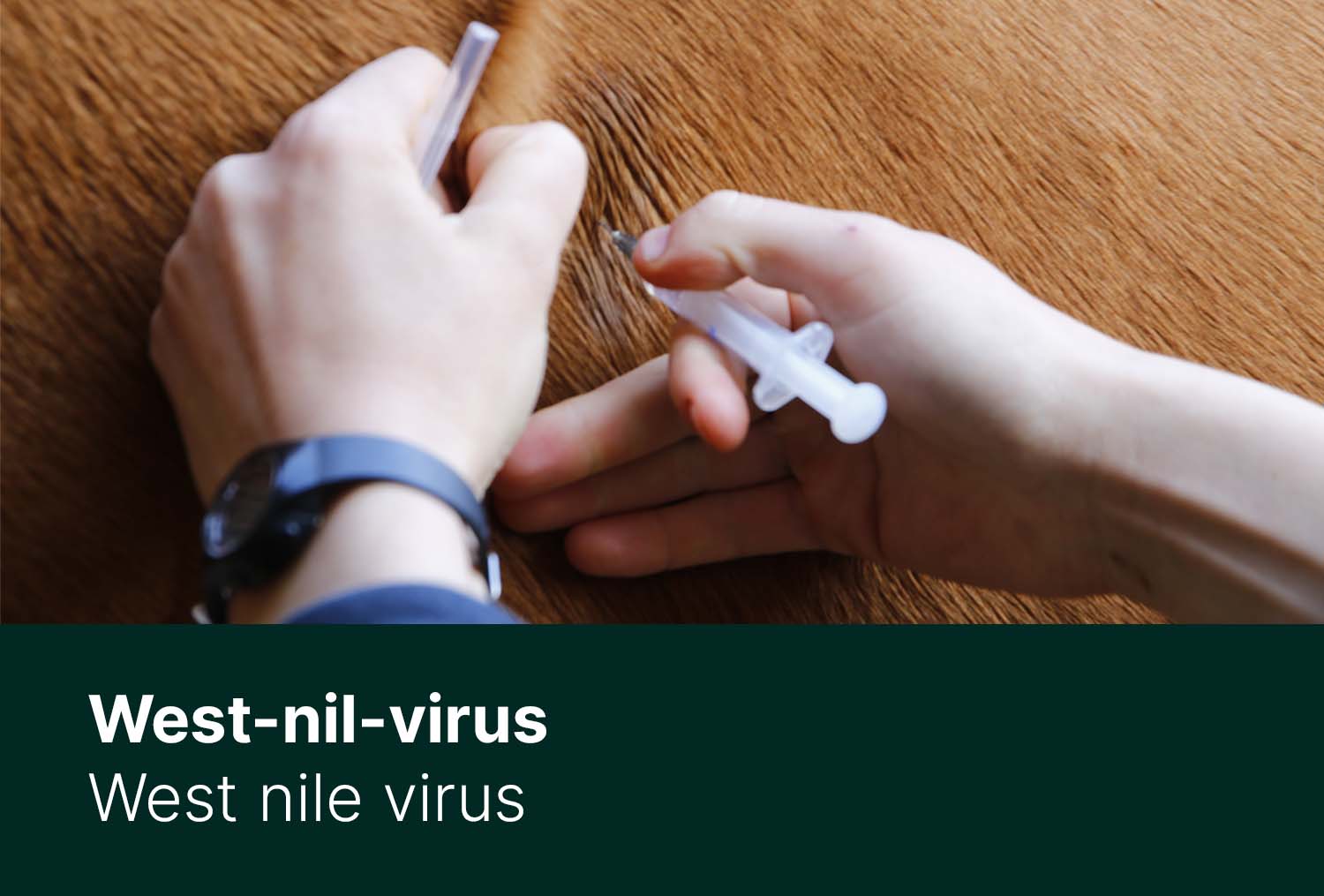Cereal belongs in the feeding trough, like the bread on our plate. But where did the trend towards grain feeding come from and do horses really need concentrates and cereals? Two trends can be observed in modern horse husbandry: 24/7 pasture and roughage or the "classic" sport horse feeding with grain, roughage and limited grazing.We provide information about the fundamental questions on grain feeding.
I. Concentrated feed, Succulent feed and Roughage
The feed, in general, can be divided into three categories.Here, the "concentrated feed" refers to all grain varieties and cereal mixes (muesli).In addition to the usual feed, such as oats and barley, but also corn and spelled can be found in the feed troughs. All cereals consist mainly of starch.It is converted into sugars by enzymes in the small intestine and enters the bloodstream as readily available energy. Depending on the type of cereal, the starch and carbohydrate content vary. The juice feed is primarily grass.From a nutritional point of view, horses did not have such lush meadows in the past, as they do today. Long grasses and lank grass predominated. The pastures today are primarily bred to meet the needs of ruminants (meat and dairy farming): Plenty of protein and fructan in a short time. Carrots and apples are also part of the juice feed. But they should only be given as a treat and not replace a meal.Roughage is ascribed the most important aspect of horse feeding. Hay, straw and barren pastures are needed by the horse for intact digestion. The gastrointestinal tract relies on a constant supply of food, which in the best case should be done by roughage.Digestion takes place in the colon and can take almost two days. In order not to suffer any shortage in the energy supply, roughage should be available to the horses on a daily basis. Also sufficient fresh water should be available to the horse at all times. In this case, distance should be taken from brook water, well-water and rain water, if this was not declared as 'food safe'. Many horses drink too little in modern horse husbandry. This is partly due to the lack of supply of fresh water on the paddock and pasture, but also due to the quality of the water. For example, the quality can also be affected by incorrect containers (black mason jugs). These smell unpleasant to the horse and contain softeners that can be dissolved by the water and absorbed by the horse. Even the self-drinkers should be cleaned regularly and the water flow should be checked. Drinking from self-drinking drinks simply takes too long for many horses. So they drink less than they need and want. In winter, lukewarm water should also be offered. Too cold water is taken with reluctance and quickly causes abdominal pain and digestive problems.




II. The Thing with Evolution
The feeding and the "use" of the horses play a vital role in the feeding. However, those who say "native horses did not eat grain either, back in the day" are not exactly right. The primitive horses lived several thousand years ago without the intervention of humans, from a nutritional and evolutionary point of view. They fed exclusively on grasses, barks, mosses, leaves and seeds. Their bodies and digestion were adapted to this food. For the horse, it was essential to survive with sparse food to survive times where there was a lack of food. With the domestication of the horses, not only the habitat and the food supply changed. Humans also intervened in the evolution of the horse and breed them according to their requirements: it should be robust, sturdy and enduring. The easy-eating represented no longer a breeding goal.To do justice to the horse's current organism, it is therefore not possible to refer to the food of the primitive horses. They have to adapt to the demands of today's domesticated horses. Naturally, there are also enormous differences in the dietary needs of the breed and the habitat (for example, Icelandic horses). The constant nutritional needs of the horses have been preserved. If you want to feed your horse as naturally as possible, you must be capable to guarantee feeding times of up to 18 hours per day (varied diet). The mineral and vitamin balance should nevertheless be checked routinely.

III. Grains - Fast Energy and Satiety
"He's feeling his oats!" - a statement that every rider has heard before, but should not be taken too precisely. As it might be expected, grain provides energy. However, the focus here is rather on the fast power supply, which also reclines just as quickly. Many horse owners opine that their horse would not have enough energy without grain in the trough. Mostly, fatigue and listlessness of the horse when riding it is rather a problem of lack of motivation and variety. Cereal consists largely of starch, which in the small intestine converts into rapidly available energy in the form of sugar. The sugar gets immediately into the bloodstream and supplies power to the horse, however the level drops at the same speed. For heavy load situations, concentrated feed is a good option in terms of energy supply. Due to the rapidly rising blood sugar level, cereals also saturate much faster than roughage. Roughage contains proportionally less metabolizable power than grain compared to the amount. For this reason, significantly more raw material must be absorbed for the same amount of energy. For heavy load situations, concentrated feed is a good option in terms of energy supply. In addition, the digestion of roughage takes much longer - the horse eats larger amounts and is still not really full, because the blood sugar level rises slowly. For this reason, horses that only get roughage and grass also have a 'willow belly' - water and crude fiber are stored in the intestine, but only slowly digested. Large amounts of concentrated feed should not be given to fill the horses belly, because the small intestine is not designed for excessive amounts of starch. Another factor in terms of saturation is the chewing intensity and, consequently, the feeding time. A good mixture of roughage and grain is important. Much mueslis is already enriched with plenty of roughage to stimulate salivation and chewing activity. Energy is supplied quickly, the horse is saturated and yet the digestive tract is in motion due to the roughage fraction.
IV. Where does the Grain Feeding come from?
When humans started using horses as a load, train and war animal the nutrition of the horse was changed drastically. On one hand, farmers could not afford the quantities of roughage a horse needs, and on the other hand, the horse's loss of work (the time the horse spent eating) could be unaccepted. The horse would have been uneconomic with the 'original' nutrition. Furthermore, the work in the fields and before the train was so strenuous and exhausting that the energy demand could not be covered exclusively by roughage. All the more during the war, alternatives to the typical food of the horses had to be found. It would have been unthinkable to carry hundreds of kilograms of roughage for each horse. The alternative was cereals: limited volume, low mass, low weight and yet significantly more energy. It was relatively common to feed a grain ration of up to 8 kg per day and horse. A diet that would make the horses sick even today.


V. Does my Horse need Grain?
This answer depends entirely on the use, the breed and the attitude of the horse. While sport horses frequently experience periods of exceptional effort, many recreational horses spend most of their time on the paddock or pasture with moderate exercise. To meet the energy demand, rough and structured food is usually sufficient. The food of sport horses, however, should be adjusted to the energy requirements and enriched with grain to prevent a shortage. In addition, diseases represent a crucial role in the choice of grain. For example, cereals should be avoided when feeding metabolically ill horses. With regard to feeding, there is not just one side or the other. Many factors play a meaningful role in assessing the right feed and feeding, and they should all be included to keep the horse healthy in the long term.








Lifehacks for the Stable
Lifehacks for the Stable